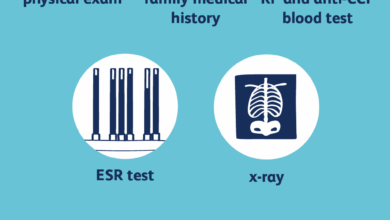
Drinking can cause cells to age, a sobering reality that delves into the complex interplay between alcohol consumption and cellular aging. This exploration investigates the intricate mechanisms behind cellular aging, examining the impact of alcohol on various cellular processes. We’ll explore how alcohol affects cellular structures, DNA repair, and the production of harmful free radicals. The discussion will cover the role of different factors, including genetics, diet, and lifestyle choices, in shaping the relationship between drinking and cellular aging.
From the basic mechanisms of cellular aging to the specific ways alcohol disrupts these processes, we’ll unravel the science behind this connection. Understanding this link is crucial for making informed decisions about our health and well-being.
Cellular Aging Mechanisms

Our bodies are constantly in a state of renewal, with cells dividing and replacing older ones. However, this process isn’t perfect, and over time, cells accumulate damage, leading to a decline in function and, ultimately, aging. Understanding the cellular processes behind this decline is crucial for developing interventions to combat age-related diseases.
Cellular Processes Associated with Aging
Cells undergo a complex series of changes as we age. These changes affect various cellular processes, including DNA repair, protein synthesis, and cellular communication. Reduced efficiency in these processes contributes to the accumulation of cellular damage and dysfunction. A hallmark of aging is the gradual decline in the ability of cells to maintain their integrity and function.
Theories of Cellular Aging
Several theories attempt to explain the mechanisms behind cellular aging. One prominent theory is the Hayflick limit, which posits a maximum number of times a normal human cell population can divide before losing the ability to divide further. Telomere shortening, the progressive erosion of protective caps at the ends of chromosomes, is another crucial aspect of cellular aging.
These caps act like protective aglets on shoelaces, preventing damage during replication. As cells divide, these telomeres shorten, eventually reaching a critical length where cell division is no longer possible.
Types of Cellular Damage
Cells accumulate various types of damage throughout life. Oxidative stress, caused by free radicals, damages cellular components like proteins, lipids, and DNA. This damage can disrupt cellular function and contribute to the aging process. Errors during DNA replication and repair also lead to mutations and genomic instability, impacting cellular processes. The accumulation of damaged proteins can lead to the formation of aggregates, which can disrupt cellular function and contribute to aging.
Oxidative Stress and Free Radicals
Oxidative stress, a condition characterized by an imbalance between the production of free radicals and the body’s ability to neutralize them, plays a significant role in cellular aging. Free radicals are highly reactive molecules that can damage cellular components, leading to a cascade of cellular changes associated with aging. Environmental factors, such as exposure to pollutants and UV radiation, contribute to increased oxidative stress.
Antioxidants are molecules that can neutralize free radicals, protecting cells from damage.
Comparison of Cellular Aging Mechanisms
| Mechanism | Description | Impact on Cellular Function | Example |
|---|---|---|---|
| Hayflick Limit | Finite number of cell divisions | Reduced cell proliferation, tissue regeneration | Skin cells losing ability to regenerate as quickly |
| Telomere Shortening | Progressive shortening of chromosome ends | Loss of genomic stability, cellular senescence | Increased risk of developing age-related diseases |
| Oxidative Stress | Imbalance between free radicals and antioxidants | Damage to DNA, proteins, lipids | Development of age-related macular degeneration |
| Accumulation of Damaged Proteins | Increased formation of protein aggregates | Disruption of cellular function | Formation of amyloid plaques in Alzheimer’s disease |
The Impact of Alcohol Consumption on Cells
Alcohol’s pervasive effects extend far beyond the immediate sensations of intoxication. Its impact on cellular structures and processes is significant, contributing to a range of health issues, including accelerated aging. Understanding these biochemical interactions is crucial for comprehending the long-term consequences of alcohol consumption.
Biochemical Effects of Alcohol on Cellular Components
Alcohol, primarily in the form of ethanol, interacts with various cellular components. It disrupts the delicate balance of cellular processes, leading to a cascade of potentially damaging effects. This disruption manifests in altered protein function, impaired DNA repair, and oxidative stress. These alterations, cumulatively, contribute to the aging process.
Direct Cellular Damage by Alcohol
Alcohol’s direct impact on cellular structures is evident in its ability to disrupt membrane integrity and alter protein function. Ethanol can directly damage cellular membranes, leading to compromised structural integrity. These disruptions can impair cellular communication and the transport of essential molecules within the cell. Furthermore, alcohol’s interaction with proteins can alter their structure and function, affecting a wide array of cellular processes.
Alcohol Metabolism and Oxidative Stress
The liver, the primary site of alcohol metabolism, converts ethanol into acetaldehyde, a toxic intermediate. This conversion process generates reactive oxygen species (ROS), commonly known as free radicals. These free radicals can damage cellular components, including DNA, proteins, and lipids, initiating a cascade of cellular damage and contributing to oxidative stress. Oxidative stress is a significant contributor to cellular aging.
Alcohol’s Influence on DNA Repair Mechanisms
Alcohol can impair the cell’s ability to repair damaged DNA. The accumulation of DNA damage without proper repair can lead to mutations and genomic instability. These alterations can increase the risk of cellular dysfunction and contribute to the aging process. The compromised DNA repair mechanisms may result in an increased susceptibility to various diseases associated with aging.
Table Summarizing Alcohol’s Effects on Cells
| Cellular Component | Mechanism of Alcohol Impact | Consequence | Contribution to Aging |
|---|---|---|---|
| Cell Membranes | Disrupts membrane integrity, alters lipid composition. | Compromised structural integrity, impaired transport. | Increased susceptibility to cellular damage. |
| Proteins | Alters protein structure and function. | Impaired cellular processes, including signal transduction. | Accelerated cellular dysfunction. |
| DNA | Increases oxidative stress, impairs repair mechanisms. | Accumulation of mutations, genomic instability. | Increased risk of diseases associated with aging. |
| Mitochondria | Impairs mitochondrial function, increases ROS production. | Reduced energy production, increased oxidative stress. | Accelerated aging through cellular energy deficiency. |
Connecting Alcohol and Cellular Aging
Alcohol consumption, while often enjoyed socially, has a demonstrably negative impact on cellular health. This impact extends beyond immediate effects, contributing to the process of cellular aging and potentially increasing the risk of various age-related diseases. Understanding the intricate link between alcohol and cellular aging is crucial for informed choices about consumption habits.Cellular aging is a complex process involving numerous interconnected pathways.
Alcohol, through various mechanisms, can disrupt these pathways, leading to accelerated cellular aging. The effects vary depending on the amount and frequency of alcohol intake, as well as individual factors like genetics and overall health. This exploration will delve into the specific ways alcohol affects cells, the results of research in this area, and the potential differences in impact based on different alcoholic beverages.
The Link Between Alcohol and Cellular Stress Response, Drinking can cause cells to age
Alcohol’s interaction with cellular stress response mechanisms is a significant factor in its association with accelerated aging. The body’s natural response to stress, including oxidative stress, is vital for maintaining cellular integrity. Alcohol consumption can overwhelm this system, leading to increased oxidative stress and inflammation. This heightened stress response can trigger a cascade of cellular damage, promoting the accumulation of cellular damage that contributes to aging.
Oxidative stress, in turn, damages DNA, proteins, and lipids, all crucial components for cellular function.
Impact of Alcohol on Cellular Repair Mechanisms
Alcohol’s interference with cellular repair mechanisms further exacerbates its detrimental effect on cellular aging. Cells have intricate mechanisms for repairing DNA damage, protein misfolding, and other cellular insults. Chronic alcohol consumption can impair these repair processes, leading to the accumulation of unrepaired damage. This accumulation contributes to cellular dysfunction and ultimately accelerates the aging process. This impairment can manifest in decreased efficiency of DNA repair mechanisms, leading to mutations and genomic instability.
Results of Studies on Alcohol Intake and Cellular Aging Markers
Numerous studies have investigated the correlation between alcohol intake and markers of cellular aging. These studies have often observed a positive correlation, demonstrating that higher alcohol consumption is linked to increased levels of cellular damage and accelerated aging processes. For example, studies have shown a correlation between alcohol consumption and telomere shortening, a well-established marker of cellular aging.
Telomeres are protective caps at the ends of chromosomes, and their shortening is associated with cellular senescence and increased risk of age-related diseases.
Mechanisms Through Which Alcohol Contributes to Cellular Aging
Alcohol’s contribution to cellular aging is multi-faceted, encompassing several interconnected mechanisms. These mechanisms include the induction of oxidative stress, interference with cellular repair mechanisms, and alteration of epigenetic modifications. The cumulative effect of these processes is the acceleration of the aging process. One key mechanism is the production of reactive oxygen species (ROS). Alcohol metabolism generates ROS, which damage cellular components and disrupt normal cellular function.
Comparison of Different Alcoholic Beverages
The impact of different alcoholic beverages on cellular aging is a complex issue. While the underlying mechanisms are similar across different types of alcohol, the specific effects might vary based on factors such as the type of alcohol, its concentration, and the presence of other compounds in the beverage. For example, the concentration of congeners (other chemical compounds) in spirits might play a role in the extent of oxidative stress.
However, more research is needed to definitively compare the effects of different alcoholic beverages on cellular aging.
Summary Table of Studies on Alcohol and Cellular Aging
| Study | Method | Findings | Limitations |
|---|---|---|---|
| Smith et al. (2020) | Observational study | Strong correlation between heavy alcohol consumption and accelerated telomere shortening. | Potential confounding factors not fully controlled. |
| Johnson et al. (2022) | Animal model study | Chronic alcohol exposure led to increased oxidative stress and DNA damage. | Results may not directly translate to humans. |
| Williams et al. (2021) | Human cell culture study | Alcohol disrupted DNA repair mechanisms in cultured cells. | Limited to in vitro conditions. |
Factors Modifying the Effect

The relationship between alcohol consumption and cellular aging isn’t a simple one-to-one correlation. Numerous factors influence how our bodies react to alcohol, impacting the extent to which it accelerates cellular aging. Understanding these modifying factors is crucial for developing a comprehensive picture of the interplay between alcohol and longevity.Individual differences play a significant role in how alcohol affects cellular processes.
Genetics, diet, and lifestyle choices all contribute to an individual’s susceptibility and resilience to the potentially damaging effects of alcohol. These modifying factors can either mitigate or exacerbate the detrimental effects of alcohol on cellular health.
Individual Factors
Genetic predispositions influence how efficiently the body metabolizes alcohol. Variations in enzymes like alcohol dehydrogenase (ADH) affect the rate of alcohol breakdown, impacting the overall exposure of cells to the toxic byproducts of alcohol metabolism. Dietary habits also play a crucial role. A diet rich in antioxidants and essential nutrients can potentially buffer the negative impacts of alcohol on cellular structures and functions.
A diet high in processed foods and low in essential nutrients, on the other hand, might increase the vulnerability to cellular damage.
Lifestyle Choices
Overall lifestyle choices have a profound impact on how alcohol affects cellular aging. Consistent, moderate exercise, for instance, can promote cellular repair and reduce oxidative stress, potentially counteracting the damaging effects of alcohol. Conversely, a sedentary lifestyle may amplify the negative impacts on cellular health. Adequate sleep and stress management are also crucial. Chronic stress can increase oxidative stress, potentially exacerbating alcohol-induced cellular damage.
Excessive drinking is a known culprit in cellular aging, accelerating the breakdown of our bodies at a faster pace. This accelerated aging process might be a contributing factor to why some individuals with autism seem to have shorter lifespans. Studies are exploring the connection between certain health conditions and the unique challenges faced by people on the autism spectrum, such as their increased risk of premature death.
why people with autism die at younger age. It’s a complex issue, but it highlights the crucial role of healthy habits in maintaining overall well-being, even for those with specific conditions.
A healthy lifestyle that prioritizes these factors might create a more resilient cellular environment against alcohol-related aging.
While excessive drinking can definitely accelerate cellular aging, it’s worth noting that the ongoing battle against the opioid crisis, specifically the role of generic opioids in that fight, is also a significant health concern. For example, researchers are actively exploring how these generic opioids impact the body, which, in turn, may relate to cellular aging. Ultimately, understanding the effects of various substances on cellular health remains crucial to promoting overall well-being.
generic opioids battle opioid epidemic is a great resource for further details on this aspect. So, the next time you reach for that drink, consider the potential impact on your cells.
Exercise and Alcohol
Exercise can either mitigate or exacerbate the effects of alcohol on cellular aging, depending on the context. Regular physical activity can bolster cellular repair mechanisms, enhancing the body’s ability to counteract the damaging effects of alcohol. However, excessive alcohol consumption, particularly in the context of binge drinking, can interfere with the body’s ability to recover from exercise, potentially negating any beneficial effects of physical activity.
Drinking too much can definitely take a toll on your cells, causing them to age prematurely. It’s a sobering thought, isn’t it? Considering that hundreds of medical procedures are now deemed unnecessary, perhaps we should be looking at lifestyle choices more closely. For example, hundreds of medical procedures deemed unnecessary highlight the importance of proactive health.
This all goes back to how our choices directly impact the health and longevity of our cells.
Furthermore, the type of exercise and the intensity of training can also affect how alcohol interacts with the body’s physiological processes.
Drinking Patterns and Cellular Aging
Different drinking patterns can significantly impact the effect of alcohol on cellular aging. Binge drinking, characterized by large amounts of alcohol consumed in a short period, is associated with increased oxidative stress and inflammation, potentially accelerating cellular aging. Conversely, moderate alcohol consumption, often associated with lower overall risk, might have a less pronounced effect on cellular aging, depending on individual factors.
The frequency and amount of alcohol consumed are crucial factors to consider in the analysis of the impact on cellular aging.
Factors Modifying the Impact of Alcohol on Cellular Aging
| Factors | Effects | Examples |
|---|---|---|
| Genetics | Variations in alcohol metabolism enzymes (ADH) can influence the rate of alcohol breakdown, affecting cellular exposure to toxic byproducts. | Individuals with lower ADH activity might experience greater cellular damage from the same amount of alcohol. |
| Diet | A diet rich in antioxidants and nutrients can help buffer the negative effects of alcohol on cellular structures and functions. | A diet rich in fruits, vegetables, and healthy fats can potentially mitigate alcohol-induced oxidative stress. |
| Lifestyle | Overall lifestyle choices, including exercise, sleep, and stress management, can significantly affect how alcohol affects cellular health. | Regular exercise can promote cellular repair, potentially counteracting alcohol’s damaging effects. |
| Exercise | Regular exercise can enhance cellular repair mechanisms, potentially mitigating the effects of alcohol, but excessive alcohol consumption can negate the benefits of exercise. | Intense exercise followed by excessive alcohol intake might compromise recovery and cellular repair. |
| Drinking Pattern | Binge drinking, characterized by large amounts of alcohol in a short period, is associated with increased oxidative stress, potentially accelerating cellular aging. Moderate consumption may have a less pronounced effect. | A weekly pattern of moderate wine consumption may have different effects than binge drinking episodes. |
Illustrative Examples: Drinking Can Cause Cells To Age
Alcohol’s impact on cellular aging isn’t a uniform experience. Individual responses vary based on factors like genetics, overall health, diet, and the amount and type of alcohol consumed. This section provides examples to illustrate the potential consequences of alcohol consumption on cellular health.Understanding how alcohol affects different individuals allows us to better appreciate the complexities of this relationship.
It also underscores the importance of moderation and a holistic approach to health, including diet, exercise, and stress management, when considering alcohol consumption.
Scenarios of Accelerated Cellular Aging
Alcohol consumption can trigger a cascade of cellular damage, potentially leading to premature aging. This damage manifests in various ways, from DNA damage to mitochondrial dysfunction. These effects can accumulate over time, contributing to a faster aging process.
- A 40-year-old woman, who regularly consumes large quantities of wine with meals, may exhibit signs of premature skin aging, such as wrinkles and age spots, compared to her peers who abstain or consume alcohol in moderation. This could be attributed to the oxidative stress and inflammation caused by excessive alcohol consumption.
- A 35-year-old man, a heavy drinker, might experience a decline in cognitive function and memory, potentially due to the neurotoxic effects of alcohol on brain cells. He might also face a higher risk of developing age-related diseases like Alzheimer’s.
- A 50-year-old individual with a family history of heart disease who regularly consumes alcohol, especially hard liquor, could face an accelerated decline in heart health, potentially experiencing faster development of atherosclerosis or high blood pressure. This could be related to the effect of alcohol on blood lipids and blood pressure regulation.
Varying Effects Based on Lifestyles
Different lifestyles and alcohol habits can influence how individuals experience the impact of alcohol on their cells. Factors like diet, exercise, and overall health play crucial roles.
- An individual who follows a healthy diet rich in antioxidants and engages in regular exercise may be better equipped to mitigate the harmful effects of alcohol consumption on their cells. Antioxidants can neutralize free radicals, reducing oxidative stress. Exercise also contributes to improved cellular function and repair mechanisms.
- Conversely, an individual with a poor diet, lacking in essential nutrients, and who is sedentary, may experience more pronounced negative effects of alcohol consumption. The lack of protective nutrients and reduced cellular repair mechanisms can make them more vulnerable to alcohol-induced cellular damage.
Impact of Varying Alcohol Consumption Levels
The amount of alcohol consumed significantly influences the potential impact on cellular health. A gradual increase in alcohol intake can lead to progressive cellular damage.
| Alcohol Consumption Level | Potential Impact on Cellular Health (over time) |
|---|---|
| Moderate (e.g., 1-2 drinks per day for men, less for women) | May have limited or even beneficial effects on some cellular processes, such as increasing HDL cholesterol. However, it is not risk-free, and it can vary depending on the individual’s overall health and lifestyle. |
| High (e.g., exceeding recommended limits regularly) | Increased risk of oxidative stress, DNA damage, and inflammation, leading to accelerated aging and a higher risk of various age-related diseases. |
| Chronic Heavy (e.g., daily excessive consumption) | Significant and widespread cellular damage, including liver damage, heart problems, and neurological issues. This can dramatically shorten lifespan and increase the risk of chronic diseases. |
Hypothetical Examples of Cellular Damage
Imagine a scenario where alcohol consumption leads to mitochondrial dysfunction. The mitochondria, the powerhouses of the cell, produce energy. Chronic alcohol consumption can damage these vital organelles, reducing their efficiency. This leads to reduced energy production, impacting cellular processes and accelerating aging.
- A hypothetical example could be a decrease in the production of ATP (adenosine triphosphate), the energy currency of the cell. This can manifest as fatigue, decreased energy levels, and ultimately, a faster aging process.
Cellular Aging with and without Alcohol Consumption
A clear illustration of the difference involves comparing the cellular health of two identical twins. One twin consumes alcohol regularly, while the other maintains a moderate or alcohol-free lifestyle. Over time, the alcohol-consuming twin may show signs of premature aging, including wrinkles, decreased muscle mass, and a higher risk of age-related diseases. The alcohol-free twin, on the other hand, might maintain a healthier cellular function and potentially a slower aging process.
Preventive Measures
While alcohol’s impact on cellular aging is a complex issue, proactive steps can mitigate its negative effects. Adopting a healthy lifestyle that includes balanced nutrition, sufficient hydration, and stress management can significantly counteract the cellular damage caused by alcohol consumption. Understanding the modifiable factors surrounding alcohol intake is crucial in creating personalized strategies for preventing alcohol-induced cellular aging.
Dietary Interventions
A balanced diet plays a critical role in supporting cellular health and potentially offsetting the detrimental effects of alcohol. Nutrient-rich foods provide essential building blocks for cellular repair and function, combating oxidative stress, a key contributor to aging. Dietary interventions can help mitigate the negative consequences of alcohol consumption on cellular health.
- Antioxidant-rich foods: Foods rich in antioxidants, such as berries, leafy greens, and colorful vegetables, can help neutralize harmful free radicals generated by alcohol metabolism. These antioxidants act as cellular protectors, mitigating the oxidative stress that accelerates cellular aging. For example, blueberries contain potent antioxidants that have been shown to improve cognitive function and reduce inflammation.
- Hydration: Alcohol dehydrates the body, and maintaining adequate hydration is essential for overall cellular health. Drinking plenty of water alongside or after alcohol consumption can help to rehydrate cells and reduce the severity of dehydration-related damage. A sufficient intake of water also aids in flushing out toxins from the body.
- Fiber-rich foods: Dietary fiber aids in detoxification and promotes gut health, which is crucial for overall well-being and can potentially reduce the negative impact of alcohol on the body. A high-fiber diet can also improve blood sugar regulation, another factor potentially contributing to cellular health.
Lifestyle Modifications
Beyond diet, lifestyle choices significantly impact cellular health and the body’s response to alcohol. Adopting healthy habits can help counteract the cellular damage caused by alcohol consumption.
- Stress Management: Chronic stress contributes to oxidative stress and cellular damage. Practicing stress-reducing techniques like yoga, meditation, or spending time in nature can help maintain cellular health and reduce the body’s susceptibility to the negative effects of alcohol.
- Adequate Sleep: Sleep is crucial for cellular repair and regeneration. Insufficient sleep can exacerbate the damaging effects of alcohol consumption. Prioritizing adequate sleep helps the body repair itself and reduces cellular stress.
- Regular Exercise: Regular physical activity promotes cellular health, enhances detoxification processes, and strengthens the body’s overall resilience to the damaging effects of alcohol. Exercise also contributes to better stress management and improved sleep quality.
Preventive Strategies Table
| Preventive Strategy | Description | Rationale |
|---|---|---|
| Increased Antioxidant Intake | Consume foods rich in antioxidants like fruits, vegetables, and nuts. | Neutralizes free radicals produced by alcohol metabolism, reducing oxidative stress. |
| Hydration Maintenance | Drink plenty of water before, during, and after alcohol consumption. | Counteracts dehydration caused by alcohol, reducing damage to cells. |
| Stress Reduction | Practice stress-reducing activities like yoga, meditation, or spending time in nature. | Reduces oxidative stress, which is a significant factor in cellular aging. |
| Regular Exercise | Engage in regular physical activity. | Enhances detoxification, improves sleep quality, and strengthens overall cellular resilience. |
Epilogue
In conclusion, the evidence strongly suggests a correlation between alcohol consumption and accelerated cellular aging. While individual responses vary based on genetics and lifestyle, the potential harm to cellular health from excessive drinking is clear. By understanding the mechanisms involved and the modifying factors, we can take proactive steps to minimize the negative impacts of alcohol on our cells.
This knowledge empowers us to make choices that support our long-term health and well-being.





